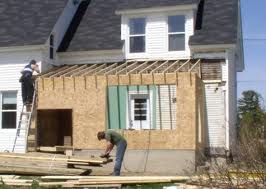Enjoy the Holiday Season and Happy New Year From The Kirsten Mason Team
We wish you, your family and friends all the best this Holiday Season. We hope that 2012 brings you happiness, good health and success. Enjoy the video.
MLS Listings, News & Statistics

Kamloops Real Estate Information
We wish you, your family and friends all the best this Holiday Season. We hope that 2012 brings you happiness, good health and success. Enjoy the video.
This article appeared on the Canadian Real Estate Magazine site and was written by the Editorial Team.

Set in the Thompson Nicola Valley in the south central interior of British Columbia, Kamloops is a transportation hub with a diverse economy.
Five major arterial highways converge on Kamloops, as well as two train companies and an airport. It’s also home to Thompson Rivers University, serves as a regional medical centre, and has promoted itself as the tournament capital of Canada for its hosting of various sports events.
Additionally, there’s a pulp mill, clean water, a resurgent mining industry, strong tourism, and lots of sunshine. There is a lot going on in the Kamloops economy, and that’s helped minimize risk for investors.
Market trends
Housing prices have slipped between 10%-25% since peaking in 2008, but sales have started to pick up again, says Trudy Montgomery, associate broker with Re/Max Real Estate in Kamloops.
The drop was influenced by the global economy, she said, but Kamloops has avoided anything like a real estate bubble.
“We’re hoping it’s showing that this market will never do what the Lower Mainland market has done where it will bubble up,” Montgomery says. “This isn’t that kind of market.”
Elton Ash, regional executive vice president for Re/Max of Western Canada, says Kamloops is more balanced than the nearby Okanagan region in terms of price.
There’s less of an oversupply in condominiums as seen in Kelowna, and Kamloops has a lower ceiling on its luxury home market. The median residential price for a house in Kamloops in February was $333,800, according to the Kamloops and District Real Estate Association. The largest share of sales, 36 total, occurred in a $280,000 to $319,999 range.
There were 25 sales under $200,000 and just seven over $480,000. Investors have benefited from a strong rental market, backed by especially by the student population. “There’s a huge rental demand because it’s a university town and also because there are lots of jobs here,” says Montgomery.
The favourite for investors are duplexes and triplexes, but they are in short supply and there’s little room left to build in the city. Another option is a house with a basement, says Montgomery, often selling for $320,000 to $400,000. Monthly rents can be $1,200 or $1,300 for the upstairs, and $900 or $1,000 for basements, she says.
“Even if (basement units) are unauthorized, it’s a very common thing because there’s very little accommodation,” says Montgomery.
Economics
Mining has returned as a major industry to Kamloops recently, highlighted by Highland Valley Copper, operating the largest copper mine in Canada. The nearby mines had been closed for years, says Montgomery.
“Just in a year, the mining industry got very solid,” she says. “That’s provided jobs and spurred on the economy.” Additionally, the Domtar pulp mill has provided steady employment, and environmental measures have kept the air pollution to a minimum.
Infrastructure improvements
One of the largest and most unique draws of Kamloops’ economy is its push to be a sports centre. Montgomery says the city recently built “Softball City” with 10 fields, as well as three rugby pitches.
Some $50 million has been invested in new and renovated sports facilities to host tournaments and training camps. It’s boosted the tourism industry, especially in hotels, and introduced Kamloops to an increasing audience.
Hiking trails and biking trails also attract residents looking for an active lifestyle. Since opening in 2005, the city’s new water treatment plant has also been attracting visitors from afar, as it’s the largest operating facility in North America to use membrane treatment.
The resulting clean water has also been a draw to new residents, fixing a previous problem with water issues.
This article appeared in the Kamloops Daily News on November 8th, 2011 and was written by Cam Fortems.

Real Estate Investment Network placed Kamloops No. 3 in its list of top 10 markets. That’s up one place from a similar survey two years ago.
Investment network president Don Campbell said job growth, prices and the city’s status as a transportation hub are all important to the ranking.
Nudging out Kamloops are Surrey at the top, followed by Maple Ridge/Pitt Meadows.
The report, titled Top B.C. Investment Towns 2011, comes the same week Canada Mortgage and Housing Corp. (CMHC) forecasted a slight increase in prices and sales volumes here in 2012.
“It’s definitely not overpriced especially on what’s coming for growth,” said Campbell, who authored the report.
“Your income is already above the provincial average and the average age is below the average — two very good signs.”
Using City of Kamloops figures, the report predicts Kamloops population will reach 100,000 in seven years.
“With the population expected to hit 100,000 by 2018 it will take concerned effort for the City of Kamloops to provide enough housing stock to keep up with demand,” the report said.
The report also said prices here are one-third lower on average than comparable housing in the Lower Mainland.
The report factored in “as a potential” opening of the proposed Ajax copper mine within the five-year time frame of the forecast and the stimulus that would bring to the housing market.
The report is aimed at investors and homeowners. The company does not sell real estate.
Campbell said investors are still able to make money purchasing condominiums and townhouse units and renting them out in Kamloops and other communities.
The report also factors in a potential 1.25 per cent increase in mortgage rates within the next two years.
This article appeared in the Kamloops Daily News on April 5th, 2011 and was written by Robert Koopmans. There are many things to keep in mind when renovating your home in Kamloops. This article explains two prevalent issues that I often come across (outstanding permits and liens) and can easily be prevented.

That’s often a mistake, say two local lawyers, as there are many statutes governing differing aspects of the construction industry — failure to be aware of them can prove costly.
Hal Hicks and Sam Dabner, both associate lawyers at Fulton and Company in Kamloops, spoke to a crowd at the Canadian Home Builders Association’s annual home show Saturday, giving people a sense of the kinds of situations when they need to be aware of the law, and when they need to consult a lawyer.
Dabner said one of the big areas people often run into trouble is with permits.
The City requires building permits be sought for all kinds of new construction, as well as renovations that alter the structure of the home.
Any changes to houses that alter internal systems — plumbing and electrical, for example, or modify walls, rooms or the layout — will inevitably require a building permit. It’s possible finished work will also need to be inspected.
As an example of how stringent the permit process really is — Hicks recently obtained a permit in order to install a new dishwasher in his house.
The reason for permits? The City wants to ensure that houses in Kamloops are safe and conform with B.C.’s building codes.
“It’s good public policy,” said Dabner.
And what happens if you don’t get one? Dabner said the City can issue stop-work orders on projects, even if they are already underway. People can also be told they must return their house or structure to its condition before the work began. If work is done without a permit, homeowners can see their insurance affected. Real estate sales documents require owners to declare improvements done without a permit.
The easiest way to avoid problems with the City — ask quetions, said Dabner. There is no need to call a lawyer. Call City Hall. The building department is always prepared to help people sort out when or if they need a permit.
Another area of home ownership that frequently sees people in need of legal help is when they hire contractors or others to do improvements.
The renovation market has been growing by leaps and bounds in recent years and inevitably, not everyone is happy with the work done, its cost or how long it took to get it done.
In these kinds of situations, contracts rule supreme, both lawyers agreed. There is big value in written contracts, as long as the contract is well understood by both parties. People must be careful what they sign to ensure they are not giving away avenues of recourse should something go wrong.
Unfortunately, much work in homes — especially lower cosy renovations — are often done with nothing more than a verbal agreement. At the least, people should always get a written quote specifying how much a job will cost and how long it will last, Dabner said.
If a dispute arises involving sums less than $25,000, small-claims court can prove a worthwhile option. The court is designed with unrepresented litigants in mind. Most cases are settled long before trial, when parties meet with judges in settlement conferences.
“If someone’s (claim) is way off base, the judge will usually tell you you are not likely to win or are going to lose,” Dabner said.
There is one last area of the construction industry many homeowners are not aware about, an area that bears great potential to cause grief.
B.C.’s Lien Act is designed to protect contractors or suppliers from doing work or providing materials and not getting paid. The act allows people who are owed money for work or materials to place a lien on a property’s title.
Liens can cause homeowners problems, by preventing them from taking measures that involve changes to title — the sale of property being the most common.
Hicks said the most common scenario that affects homeowners is when they hire a contractor to do work but that contractor fails to pay his sub-contractors or suppliers.
A lien is placed on title by those who are owed money by the contractor, Hicks said, and the homeowner is stuck, unable to clear their title until the debt is paid.
The remedy? Holdback. The act allows homeowners to withhold 10 per cent of a final bill for a maximum of 55 days, in order to protect against the possibility of seeing titles locked by lien.
In such cases, holdback money can be diverted to unpaid sub-contractors and suppliers. Keeping holdback on the bill protects homeowners from paying twice for the same work, or seeing their titles locked up in protracted disputes between other parties.
The bottom line — homeowners who are ignorant of the laws that govern the construction industry run the risk of bearing costs or other down the road. When in doubt, ask a lawyer, both agreed. The cost of seeking advice early will always be more cost-effective than hiring a lawyer to sort through problems after the fact.